Sitting on a simple chair in the kitchen of my flat in Glasgow (it is not a particularly nice kitchen, but not not nice), I suddenly become keenly aware of two presences in the room: the first one, me. The second one, my beans on the stove.
I bought my black beans from the Spanish store a 15 minute walk away, and I got the bag of the uncooked variety which means it takes one whole hour for them to cook. This is how I found myself on this Monday evening sitting in my little kitchen at this flat I just moved into (I moved flats!) with an hour of time to spare. I pick up the book “Anthropocene Feminism” to pass said time, and as I read about the feminist approach towards re-imagining the divide between humans and non-humans, I suddenly become aware of that bubbling, nutritious, protein-packed little bean of energy sitting just a few feet away from me.
Although I had perceived that I was alone before (alone time is not something I fear these days), I suddenly feel a sense of being not alone.
In this kitchen there is me, and there is also the beans.
Today we had our monthly reading group for RESPECT — Rapid Engagement with Stressed Peatlands and Communities in Transformation — where one person from our multidisciplinary team picks a few articles for us to read, and then we all converge to discuss. This week’s readings were chosen by Miranda, and she chose readings about policy around “muirburn”, a traditional Scottish practice of burning heather on the muir (which is also often peatland). There is much contestation over whether or not that’s a good idea: the science is unclear. Does burning the muir prevent build-up of dead heather, thus mitigating real wildfire risk? What about clearing the land for the sheep to graze?
After much discussion on the role of muirburn, and the role of traditional management practices, Jill, my supervisor, brings up the question of tradition at-large.
How do I say we just need to go back to the past without sounding unbearably nostalgic? she asks (along those lines).
Alex, the social scientist on the team, responds as a 7-foot head zooming in from Elgin, Scotland. Traditional practices aren’t about the practice, he says. They’re about the relationship to land.
We cannot restore a landscape without restoring the management practices of that landscape. He says.
On the peatlandland there is heather, but there are also humans.
I have been thinking a lot about Glasgow these days. When anybody comes to visit for just a day or two I tell them, “Glasgow isn’t a city for visiting. It’s a city for living.” I have been thinking about how Glasgow is the kind of city you need to crawl into. Crawl inside of. It isn’t a surface city — there isn’t much to see. But Glasgow, when you spend a bit of time with it, has a rich inner life.
The other day at 3 pm, sitting in the sun with a professor from the Glasgow School of Art, she describes Glasgow to me (she is from here). She says, “In Glasgow nobody is really going anywhere. But everyone is kind of fine with that”.
In Glasgow there is not much, but I swear (as cities go), it is all I need.
Leaving the meeting today, on my way to go cook rice and beans, Miranda stops me and says I look like I am doing a lot better than last time she saw me.
Last time she saw me I was having a, “PhD crashout”: an absolute existential crisis about being in law and about doing this peatland restoration project and about my own capability to do this PhD and do it well.
But today, with one week before my first deadline, I feel okay.
Twenty minutes left on my beans. I go check them (pause while I go check them)
Oh shit- man! There was NOT enough water in there.
Glad I checked.
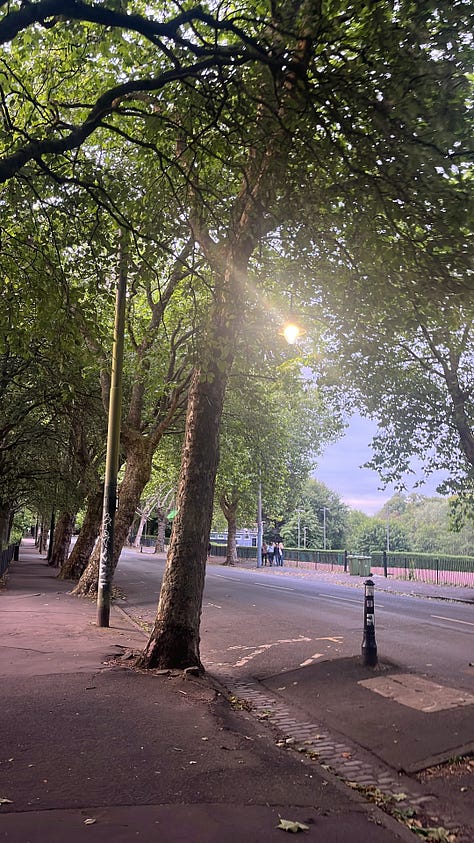

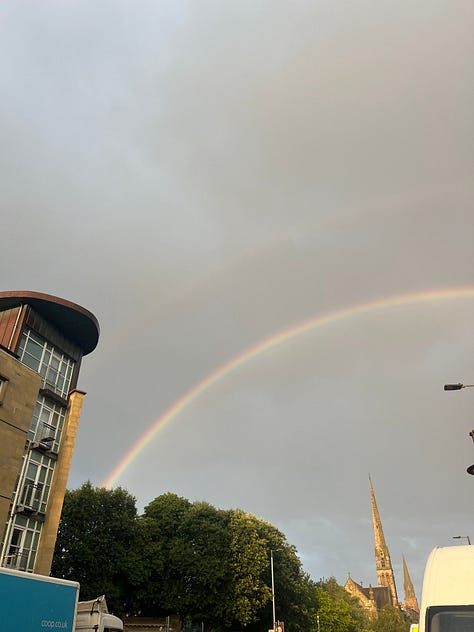

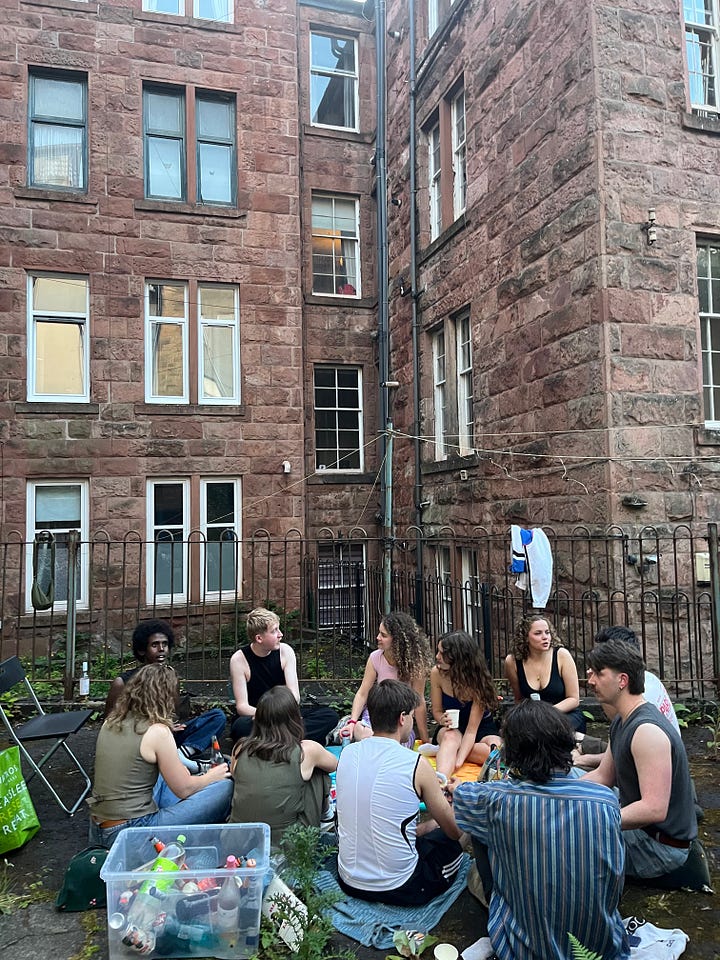
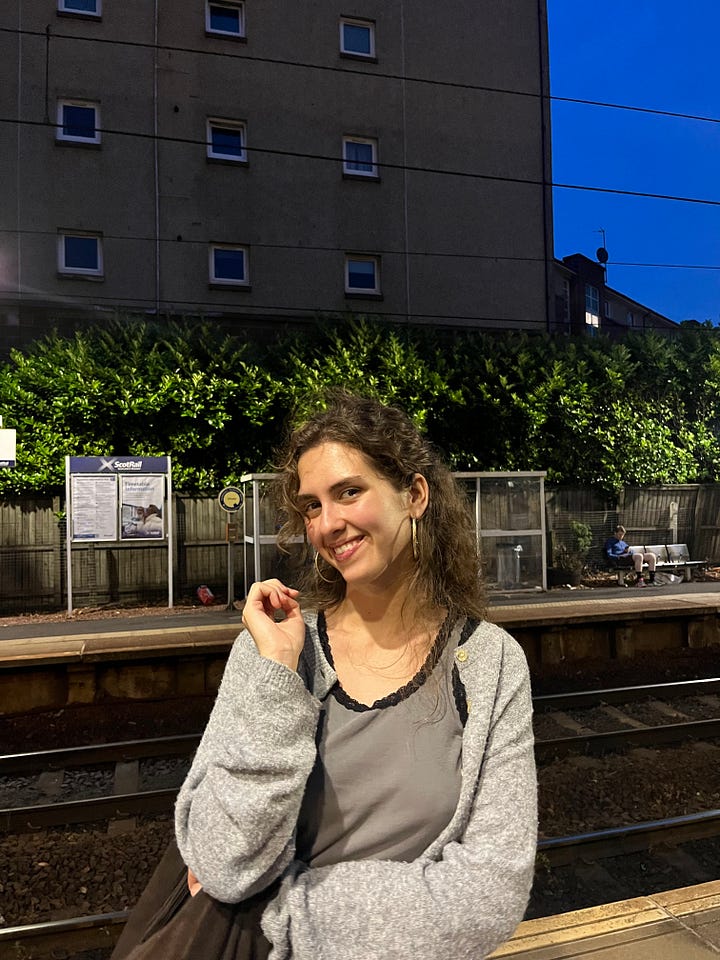
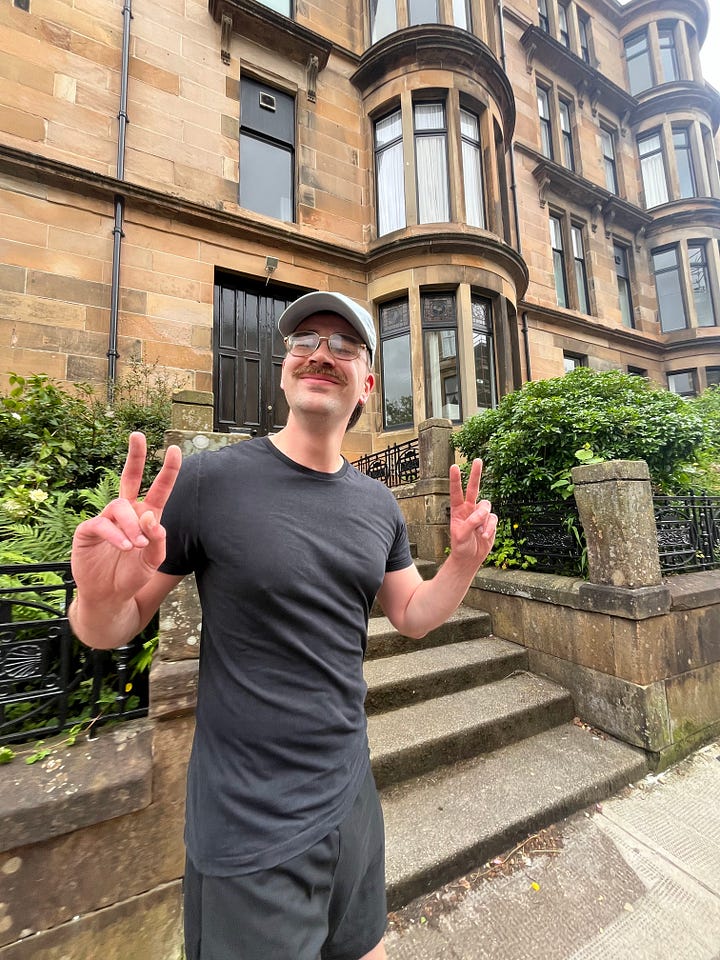




thanks for sharing.
Love you, grandma